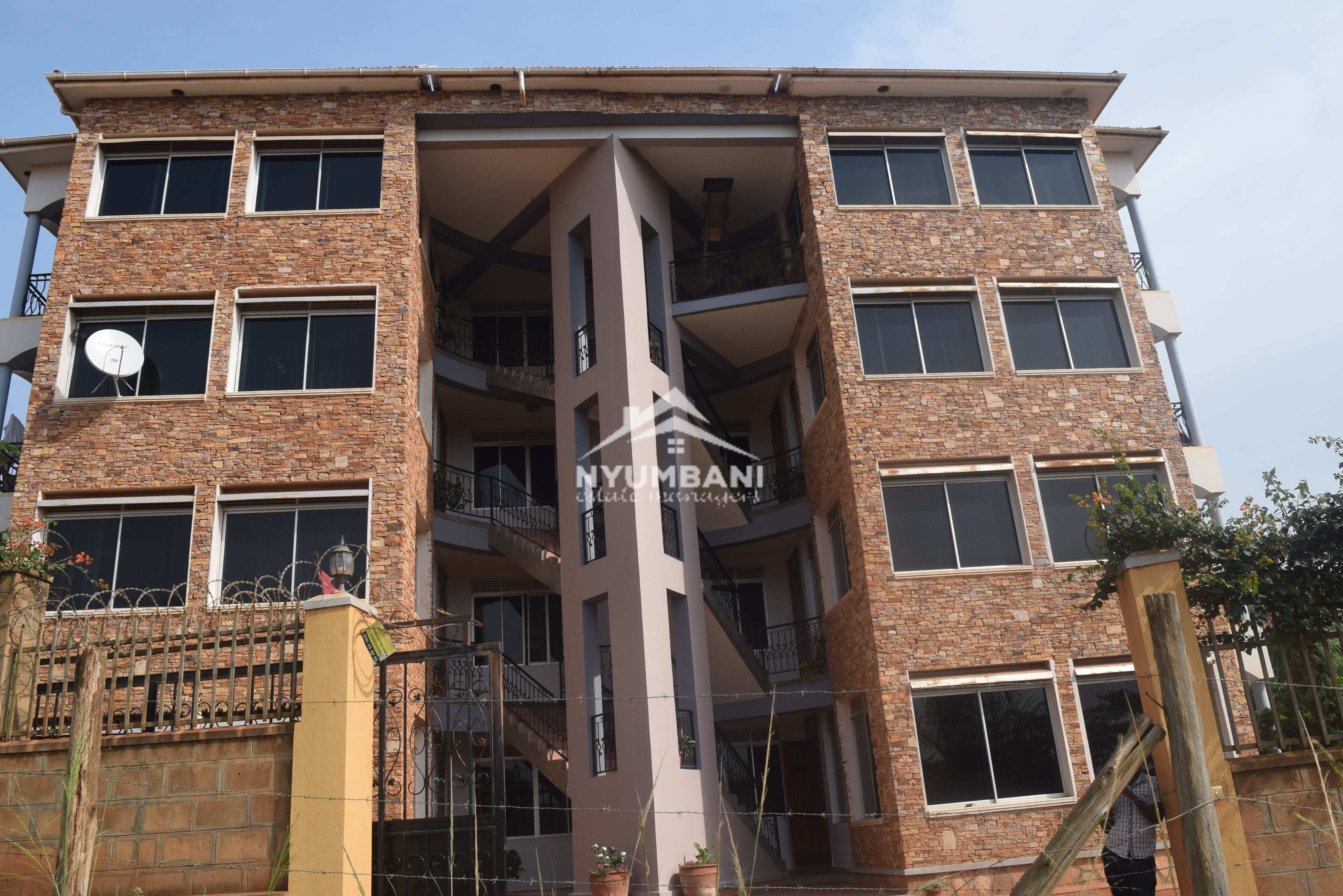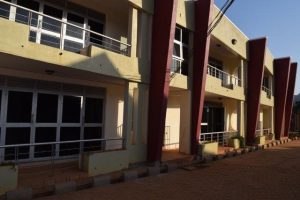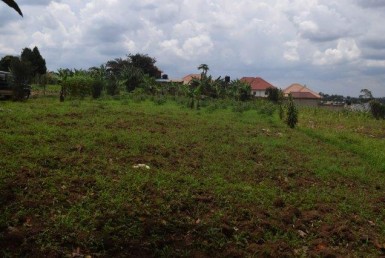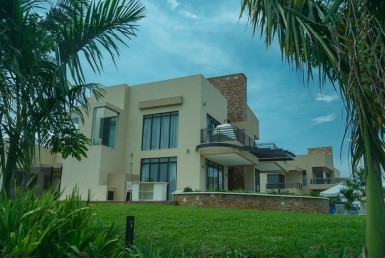AN ORAL HISTORY OF THE HOUSING CRISIS IN KAMPALA


If you have ever looked for a house in Kampala, you will understand the hustle of getting a location and a roof over your head. Sometimes it is because of the unreliable realtors but most times it is because Kampala is facing a housing crisis they can’t even acknowledge. We seek to cover and make sense of how we got to this point as a city and a state. We don’t seek to give answers but we seek to make sense of the happenings.
Kampala, traditionally was built on seven hills. Nsambya, Kibuli, Namirembe, Old Kampala, Rubaga, Lubiri and Nakasero. This isn’t definitive, as the city has expanded beyond the original colonial demarcations. Contrary to what is written in history, it is quite puzzling to figure out if Kololo and Muyenga belonged to the ancient city or the new one.
Unlike most cities, Kampala from the start was built on a complicated system of land tenure that divided the land between crown (Government) and Mailo (The Buganda Crown) according to the Buganda agreement of 1900. In generosity expected of a king, the native crown in an earlier form of devolution, gifted land to chiefs and those in favour of the king. The two churches and the Mosque effectively completed the land grab. Interestingly of the seven hills five belong to religious bodies. The catholic church with the upper hand have interesting edifices on both Nsambya and Rubaga hills. Namirembe is the seat of the Church of Buganda, Nakasero is where the Church of Uganda hold court in pseudo exile (confusing? Yes give up) the same hill held very many of the administrative
functions of the protectorate including many government departments when they eventually shifted the
capital to Kampala from the old site in Entebbe. Kibuli became the seat of the Islamic party in Uganda with the headquarters facing the Central Business District. Lubiri is the central administrative hill where the headquarters of the Kingdom of Buganda are located.
The city of Kampala wasn’t founded on need to actually make do of very important work but rather proximity of services to the Governing body. Typical of the Judaism beliefs, a dick swinging contest followed, Hospitals, Schools and giant worship domes were built to assure the particular believers of proximity to the deity above. The Kingdom also went on to build a kick ass palace complete with a mile of trees an imitation of the grand houses of Europe. The protectorate government was silently building structures of administration for effective occupation in their part of the slice albeit with frustration given they were used to total domination of the natives not this power sharing arrangement.
In this work, the city faced problems that were territorial, for example it was hard to build a sewage system citywide when half viewed the other parties as certified land grabbers(which is true), road networks faced and still face legal hang ups if they dare cross into private property (ironically it is all now private property). The colonialists focused on building enclaves of pristine in this chaos. Kololo and Nakasero built to the standard of the home country and given an exotic feel to bring out envy. The Baganda overlords now faced with long stretches of time in the capital also started making their own town houses significant in their catchment area around Lubiri and Namirembe. The Judaists
of course continued making arrangements for accommodation for their clerics. At that time, in other colonial cities like Johannesburg and Nairobi very poorly thought out laws with unappealing names like the native habitation act were implemented. The delicate balance of Crown and Mailo land was duplicated in many of the towns and municipalities in the province of Uganda in line with the British protectorate doctrine and the indirect rule they favoured over Uganda.
Kampala generally an administrative unit, one not really designed for habitation of the natives. The city centre was inhabited by the Indians and foreigners with a few civil servants occupying allocated housing but importantly keeping their families upcountry. The natives were never factored into the general city plan at any point as Uganda like the rest of Africa hurtled towards independence. The original plan limited the well laid plans to the area that was effectively
crown land. In the worst of colonial practices, segregated housing was attempted but not on the scale repeated in Kenya and Soweto where estate planning akin to the new system of suburban housing that had proved a hit in the USA. That kind of housing was preserve to the civil service with aptly named ‘’Junior’’(African) and ‘’Senior’’ quarters littering provincial towns. The Asians were not left out, with their own Indian quarters cropping up. Sometimes estates were constructed to suit specific occupations like the Nurses quarters.
Uganda National Housing and Construction Corporation as it is known today came into existence as an act of Parliament in 1964, with mandate of providing housing for Ugandans. In many ways, fifty years later that remains a pipe dream. UNHCC has built houses as promised, whether it has constructed houses for the average Ugandan remains to be seen, they claim they will venture into the low end estates away from the upper end market they have been pursuing.
When Uganda was declared a Republic, the tides were good, majority of population in the rural areas, the rest were generally unconcerned about the capital as state interference had been minimal only surfacing to implement one of the empire’s obsessions like quarantine, head tax, growth of cash crops as advised by the home office and a few assertions of dominance.
The new Government had executive powers, but never had real authority on the ground. Majority of the land in the capital and the immediate surrounding areas was owned by the Kabaka, his loyalists, the Judaic deitists. A comprehensive city plan had to include consensus from all the parties, something the British tactfully avoided but handed over to the incoming administration.
It was just convenient for the new big bosses to inherit the luxury of the departed colonialists, they never only took up positions in the Government departments, they moved into the former colonial enclaves of tranquillity in Kololo,Nakasero and Naguru for those of clout. Immediately trying to imitate the former masters as pointed out by George Orwell in his timeless masterpiece the Animal Farm. The new masters were not really interested in governance but more in politics. The infrastructure inherited tells the story of politicians trying to make technocrats.
Idi Amin was ushered in. His misguided simplicity tried to make headway as the city now started crawling away from the seven hills to the suburbs. The first mass construction orchestrated by the state appeared as Bugolobi and Bukoto flats were completed. Various Government agencies also received that kind of housing for their members of staff. This kind of housing wasn’t factoring in anyone outside of the State’s employment. In fact it was fashionable for the parastatals to provide housing for the people under her belly. Amin orchestrated the departure of the majority merchant class of Asian origin. This effectively increased the number of citizens with an acquired middle class taste. In short, the privileges were installed with no regard for the responsibility attached to that lifestyle. As the official state position favoured a rural agrarian population, greatly assisted by the perceived insecurity that made people rather stay away from the capital. A steady stream of migrants started trickling into Kampala looking for the opportunity the city was supposed to offer. In the beginning, the city people were generous, the Kabaka offered land to squatters from Acholi spawning the name acholi quarters in certain areas of the city.
Kampala was never an industrial centre, just a practical administrative unit, sustained productivity was always going to be difficult. This never stopped the city from spawning social services and pseudo manufacturing outlets to mainly meet domestic needs.
In 1986, a young idealistic rebel leader took over the city and renewed a sense of optimism among the population. Local manufacturing grew around the city together with people who fled to the city some looking for opportunities others looking for security. In a mirage of problems the new state faced, housing seemed to be the lesser of the evils, it never leveraged off a lot of political capital.
Privatisation occurred and the state lost the monopoly of providing subsidised housing to its staff members.Initially the state offloaded most of it’s housing burden barring the sensitive one like the State House and designated government residency provided by institution. Civil servants and the general public went into a swing acquiring prime property for next to nothing.
By the middle of the last decade of the 20th century, housing was fully private business and the masses were hungry for accommodation. The absentee landlords went into overdrive, now land that was usually gifted to young family members was being divided into bibanja(plots) for sale first at a trickle. Mailo land as stipulated in the 1900 constitution belonged to the Kabaka who in turn had gifted it to his loyal subjects. Most in the city peripherals were selling and shifting their ancestral homes farther away from the city precincts. A cautionary tale is told of a family who sold off their estate in Najjanankumbi as the city was clearly clawing their sacred grounds, they continued to move their estate to Maya which was then certified a rural area, nearly two decades later, the city has arrived and they have to reconsider if to move the dead again to a more favourable location. Some unspoken rule exists on the burial of people in urban locations, disappearance of burial grounds usually signifies the arrival of urbanisation in a particular location.
At first a land deal was simple, it involved the two parties agreeing on the price and the scope, so an old man (not many young men held right land rights, well women weren’t even factored into the equation) usually went to the boundary of his holding decided by an ancient marker like a stream, hill, certain kind of tree, swamp later mark stones were introduced, haggled a price with the buyer with no regard for the squatters. This was followed by a confirmation of the transaction by a meeting of the family members and the local authorities who wrote down the said agreement and the land changed hands. This was usually land inherited and generally frowned upon as being far away from the city, some as very distant as ten kilometres (10km) from the Central Business District ( For clear distinction we will use the Parliament of Uganda as our marker for the central location). The seller usually after having seen this land in his family for three generations generally assumed it could never appreciate in value, disposal was sensible. Polygamy having created many sibling rivalry which was simmering, for harmony the family heirloom was sold off and the proceeds split to ensure it never got to a civil war. In other cases it was just plain poverty that had the land being sold off.
The formerly Crown land wasn’t faring any better, after years of quick switch administrations and dodgy record keeping, the boundaries were very dodgy and by the 90’s you could say with certainty the State never knew her property portfolio. In a story told in a London tavern one cold evening, a former civil servant in the Obote administration claimed to own Mulago Hospital at least the land it stood on, as in his rush to exile he had forgotten to hand over office and had fled with the land title on which the hospital was located. Since this was state property, two civil wars had effectively ensured that no one even knew what was where. Privatisation, a get out of jail card as whoever held whatever he had looted just stayed with what he had.
The Judaists with experience in chaos as their history is littered with conflict were unusually calm all through this turbulence. By 1991 when it was apparent nothing like conflict was going to happen in Kampala city soon,they emerged from the woodwork untouched. A cursory study of their real estate was auspiciously clean. Looting had occurred but not on the scale of the state and private residencies. A fear of God had usually turned away criminals as assumed. In fact the catholic and protestant churches emerged from the two civil wars ready to do business, the Romans promptly opened up Centenary bank as the state managed to throw away the Uganda Commercial Bank which explains the stark contrasts. The religious institutions were not reporting land grabs like the other two land
owning peers. It could come down to the detailed record keeping the judaists are famed for or reluctance to appear materialistic. In all of the three main religious parties came out relatively unscathed.
1990’s slums were taking over the city peripherals first it was amusing but it was always assumed the people would just go away. Pseudo manufacturing factories were littering the city corners with no particular location. Bwaise was a huge furniture workshop, many carpenters were noticed in that area, Ndeeba, Katwe were mechanical workshops and electronics hubs, Namuwongo was hosting the revived industrial area. All this was encouraging settlement not the previous one where families were left upcountry as the men hit the city to hustle.
Enter a generation of land brokers and house brokers who did encourage city settlement. Property masters headed by a former university lecturer emphasised you could actually afford a house in one of the numerous satellite city estates he planned, he appeared gripping land titles and had the attention of the people who previously thought you worked in the city and went back home. This was a novelty, he claimed to a broker who connected buyers to sellers. It would be long and tedious to tell the story of fraud that followed but that will be covered subsequently. This served as a double header, ordinary folk now believed owning a small piece of the city wasn’t limited to the civil servants and also served to make land the premium commodity in a city short on production avenues. Of course like many places land fraud was rife. Still this only wasn’t solving the silent housing crisis that was now looming.
At first anything was rented to even boys quarters of huge houses, the situation was further compounded by the liberalisation of University education. Makerere University could no longer afford to house all her students and effectively sealed off the areas of Kikoni, Wandegeya, Nankulabye to student based accommodation. This is usually highly priced and not really cosy in setting. Kyambogo University on the other side of town was not making a huge dent like her bigger sister but then another city accommodation area was lost to the students.
In all this rental properties started mushrooming as any single dime that was thrown around inevitably ended up in the real estate sector, this was opening up the city. Namugongo previously a rural enclave that opened up once in a year in June to allow throngs of pilgrims to the ancient massacre site of Christian declared martyrs was effectively a city suburb, Budo the other rural site hosting the most prestigious Ugandan school and also ancestral coronation grounds for the kingdom of Buganda was now creeping with concrete where you previously stood and saw lush bushes. This is effectively 15 -25 km from the city centre.
The Government of the republic were also ahead of the gambit with the construction of the second city bypass after Lugogo almost five decades later to make sure the prefectures of the city were opened up. In a span of a decade, two express ways are to be completed making sure the city will now have a 25km radius of inter connected pathways (some roads are just that with a thin layer of gravel).
The city population continued to grow and so did construction on a large scale of small rental properties in an open and unregulated market. Politics now joined the fray, traditionally Kampala has set administrative boundaries and the all around she is covered by the district of Wakiso which basically has all the administrative set up of a rural Ugandan district. For example if KCCA (Kampala City Council Authority) which is governed by an appointed boss tries to construct a central drainage unit, they will have to agree with the local government of Wakiso whose decision making is handled by politicians who will kick it back and forth. The other problem is the level of private land ownership
(private mailo land) from the start, the state was never involved in planning for how the other shareholders used their land, attempts to make any public good are usually met with riots or the mistrust inherited from the days of the colonialists create a stonewall.
The state can plan a road and will have to pay a hefty compensation whose figures are basically arrived at by complex arithmetic motivated by obvious greed but justified by frivolity, basically any state project will be astronomically expensive not because of corruption alone but also the parameters for interaction of the state and private citizens as regards to private property aren’t properly defined.
Which also makes the question of rent very interesting. Majority of residential rental property is on private land, we can comfortably state that a housing census can’t surely point out how many of these exist. The classification is purely non existent and the construction standards are usually left to the construction crew and how much the landlord is willing to invest in this venture.
No consideration is paid in anyway to the middlemen (brokers) who are usually just local boys who because have a good understanding of the geography and what you usually are looking for based on experience. What now they have accumulated over time is a practical knowledge of their surroundings and the patterns of tenants.
What determines the price of rent is usually perspective. In this case, with no real central regulation, a
landlord completes construction, summons the neighbourhood broker and tells him to find tenants. He
asks for a comparative price from the neighbourhood. He then locks down a figure to occupy his residence. No consideration is paid to the figures that most tenants earn, hence default and continuous movement of people from one house to another.
The market for rent isn’t backed by policy. It is common for landlords to close down tenants without due process. Most times occupancy is based on ability to pay on the spot, background checks are limited to a residency letter from where you were last a resident. Standards are dodgy. It isn’t uncommon to find a family of four occupying a single bedroom house. Spacing is determined by how many of those units can be crammed into a single plot of land rather than determined human standards for accommodation.
The sanitation situation is quite amusing even in the high end areas and building a sewer system is impossible as you have to rely on cesspit emptied time from time and then accessibility is complex mathematics as most of the roads weren’t planned(never a consideration) in the initial fragmentation of the land to create this settlement.
More housing units are coming to the market as the city accommodation stretches from it’s initial city confines to almost thirty kilometres (30kms) from the city centre. The real problem now switches to standards as regards to pricing.
Most rental units are priced emotionally basing on cost of construction and need for revenue as opposed to service provision. Long time tenancy and creative buy out clauses aren’t even factored in for these units which would make a lot of commercial sense to both the landlords and give the tenants security. Condominium declarations should become common for the market to gain a certain level of security, in a market where most of the landlords look at their tenants as lifelong cash cows. It is a distant possibility but one that will require a greater understanding on what a broker can do for you and the landlord. One we will look at later.




Join The Discussion